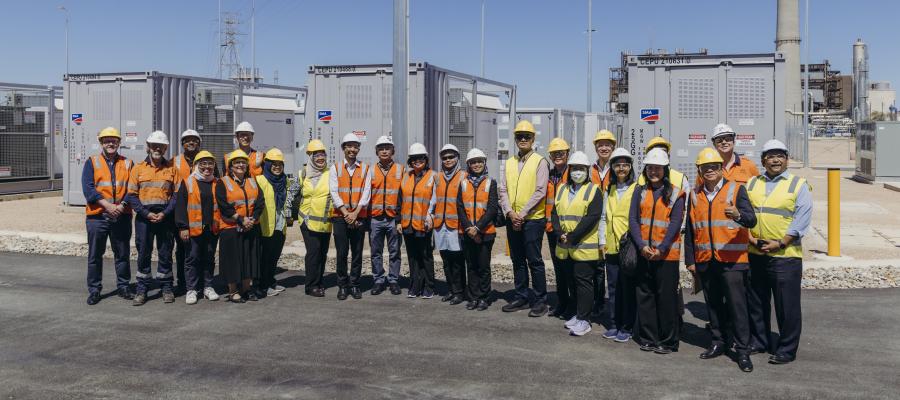If you are interested in partnering with us, please get in touch. Using P4I's flexible, innovative tools and diverse global expertise, we are confident we can design a response that is tailored to your needs.


Whether in transport, energy, or public investment management, Australian organisations bring valuable experience that resonates with Southeast Asian counterparts undergoing similar transitions—driven by climate change, the need for strengthened social inclusion, and a focus on decarbonising the energy sector. Australia’s prosperity is also closely tied to Southeast Asia’s sustainable economic growth.
Meeting these shared infrastructure challenges—climate and disaster resilience, accessibility, and energy transition—requires deep, long-term collaboration. That’s where institutional partnerships come in: trusted, peer-to-peer relationships that embed reform, transfer capability, and foster mutual understanding across borders.
Since 2020, P4I has supported over 25 formal partnerships, connecting 109 Australian organisations with 64 Southeast Asian counterparts. These collaborations have contributed to policy reform, strengthened technical standards, enabled co-designed frameworks, and supported long-term capability building across sectors. They’ve also provided Australian organisations with crucial insights from operating in diverse geographical, regulatory, cultural, and market contexts.
When Queensland's Department of Transport and Main Roads (TMR) team began working with the Philippines' Department of Transportation (DOTr) on accessibility, they didn't expect the partnership to help them rethink their own preparations for the 2032 Olympic and Paralympic Games. But that's exactly what happened—demonstrating how P4I's partnership approach creates genuine two-way learning.
P4I is more than a traditional aid provider. Its partnership model is built on long-term relationships, mutual priorities and a clear understanding of context.
Three standout partnerships illustrate P4I's approach and impact in the countries where it operates and the benefits for Australian partners:
Drawing on decades of road and bridge engineering experience, Austroads partnered with MPWT to update road and bridge design standards last used in the early 2000s. The collaboration has evolved into four Cambodian engineers undertaking five-month secondments with Queensland's TMR – strengthening relationships between technical teams, making a lasting impact on Cambodia's road planning, and providing rewarding mentorship opportunities for Austroads staff.
TMR's pioneering work in transport accessibility supported the development of a co-designed framework for the Philippines, a nation of over 100 million people. Creating a framework that will leave a lasting legacy has been extremely rewarding for the Australian team on a personal level. The partnership has also sharpened Queensland's own approach to working with delivery partners ahead of the 2032 Olympic and Paralympic Games.
Leveraging Australia's rapid renewable energy transformation, CSIRO has used P4I's platform to establish collaborative partnerships across the region – creating technology exchange opportunities, building networks of talented energy engineers, and exploring research pathways that benefit all partners.
These partnerships align with Australia's Southeast Asia Economic Strategy to 2040, working across four pillars: raising awareness of Australian capabilities, building regional capacity, removing investment blockages, and deepening two-way investment. The approach recognises that Southeast Asia will continue to account for a significant share of global infrastructure investment growth.
By sharing expertise now, Australia is positioning itself as the partner of choice for the region’s infrastructure transformation—while also enabling Australian organisations to advance domestic priorities and provide their staff with valuable international growth opportunities. As P4I moves into its second phase, the lessons from these partnerships will shape how we engage, adapt, and expand—guided by the needs of our counterparts and the priorities of Southeast Asia’s development agenda.
Read the full case study for first-hand insights from Australian organisations involved in P4I partnerships: Solving shared challenges through partnerships
If you are interested in partnering with us, please get in touch. Using P4I's flexible, innovative tools and diverse global expertise, we are confident we can design a response that is tailored to your needs.
